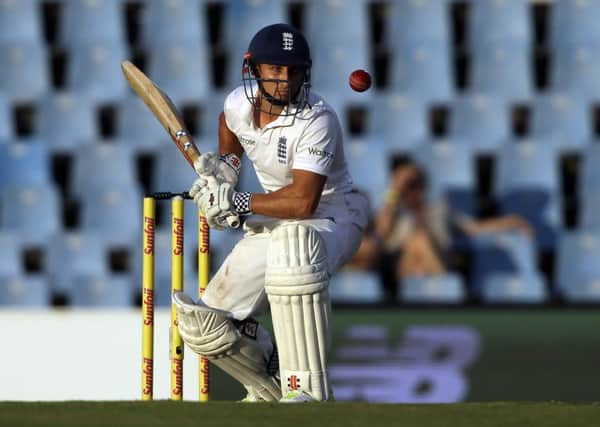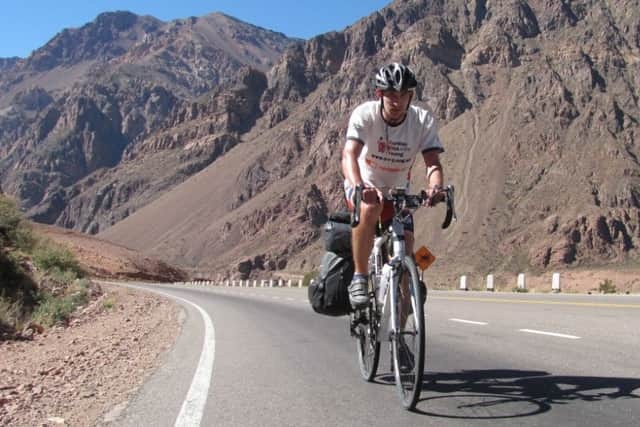Why there is life after cricket for James Taylor


Lying in a hospital bed with the career he loved so much gone in flash, England cricketer James Taylor probably doesn’t feel very lucky right now. Earlier this week the diminutive Nottinghamshire batsman, who made his Test debut at Headinley four years ago, was diagnosed with a heart condition which means he will never play competitively again.
Breaking the news on Twitter, Taylor managed to remain upbeat. Doctors may have told him that he had ARVC (arrhythmogenic right ventricular cardiomyopathy), an inherited condition that can abnormal heart rhythms, but he promised that he was ‘here to stay’ and ‘battling on’.
Advertisement
Hide AdAdvertisement
Hide AdAs the shock subsides, there will likely be dark days ahead for both Taylor and his family, but many of those touched by the condition know that so often the diagnosis comes too late.


According to the charity Cardiac Risk in the Young, 12 young people in the UK die of undiagnosed heart defects every week. In around 80 per cent of cases there will have been no prior symptoms.
That was the case when Stuart Challis collapsed and died while playing football in 2006. He was just 25 years old.
“His post-mortem identified ARVC and our GP explained the genetic implications and the importance of screening for both my other brother and I,” says his sister Lucy. “The shock meant that we didn’t really take in what being screened meant. It was just another hurdle to overcome.”
Advertisement
Hide AdAdvertisement
Hide AdThree months after her brother’s death each of the Challis family underwent an ECG to test for the condition.


“The doctor asked if anyone had experienced possible symptoms and when I mentioned I had fainted on a horse at 15, the look on his face got me thinking. By the time he had studied the results of the tests, I’d come to expect the answer - he thought I had ARVC too. In comparison to Stuart’s death I almost felt like this was nothing - at least I was still alive.”
Further tests confirmed the suspicions and having been prescribed medication, Lucy was also offered an implantable cardioverter defibrillator. Relatively straight-forward to fit, ICDs are able to shock the heart back into regular rhythm if it detects any abnormality.
“I said yes immediately. There was no question of me putting my family through the possible heartbreak of losing another child. I’m a practical kind of girl, but the hardest thing was dealing with other people - some wanted to wrap me in cotton wool; others found it difficult to accept that I was suffering from a potentially life-threatening condition as there were no outward signs.”
Advertisement
Hide AdAdvertisement
Hide AdSince having the ICD fitted, Lucy has started her own family and has been determined not to let ARVC cast any more of a shadow than it needs to.
“I had brilliant care during my pregnancy and my heart seemed to cope well. After those months of upheaval, our family settled into a more routine existence as we learnt to live without Stuart. Memories became happy, rather than sad, and now his name is mentioned without tears, at least on most occasions.”
Lucy wrote about her experience in a booklet published by CRY to help others in the same situation. Founded 21years ago, the charity is at the forefront of the campaign to improve screening for potentially fatal heart conditions.
While ECGs are quick and painless, they aren’t free and last summer the UK Government rejected calls for a universal screening programme for young people amid suggestions that the number of victims was too small to justify the cost.
Advertisement
Hide AdAdvertisement
Hide Ad“Young sudden cardiac death is rare compared to cardiac deaths in the elderly and middle-aged, but it is not rare compared to the other most common causes of death in young people, like road traffic accidents and suicides,” said CRY founder Alison Cox in response to the decision. “Many medical professionals and policy advisors still incorrectly think that it is as rare as being killed by lightning, which is simply wrong.
“This thinking is outdated, dangerous if applied to medical decisions making and it should have no place in policy recommendations.”
CRY’s own screening programme currently tests more than 20,000 young people a year and of those one in 300 are found to carry a potentially life -threatening condition.
While the Government may be unable or unwilling to extend that screening programme, research is underway which may save even more lives. Funded by Yorkshire-based charity Heart Research UK, consultant cardiologist Professor Andre Ng is part-way through a project which will hopefully lead to the development of a simple, accurate and cost-effective test to predict which patients are at risk of sudden cardiac death.
Advertisement
Hide AdAdvertisement
Hide Ad“If we can identify those most at risk then we can save their lives,” says Prof Ng. “These genetic heart conditions are clearly there from birth, but often the symptoms don’t present themselves until much later on. Our work is about finding an effective clinical test, but we also work closely with psychologists because often the mental recovery from finding out you have a heart condition can be longer and tougher than the physical one.”
However, if there is proof that there is life after an ICD, however, it comes in the shape of Tim Butt. A former elite triathlete, who combined coaching with his own training, three years ago he woke up in hospital having suffered a cardiac arrest.
“I was diagnosed with Long QT, which is similar to ARVC and pretty much immediately had the operation to fit the ICD,” says the 27 year old. “Of course it’s been life-changing, but I have focused on what I can do rather than what I can’t.”
Much to his girlfriend’s despair that has meant cycling across South America and running his first marathon. He wasn’t going for a personal best, but still managed to get round in three hours, 42 minutes.
Advertisement
Hide AdAdvertisement
Hide Ad“Before, I was incredibly competitive and I hadn’t wanted to run a marathon because I didn’t think I would ever complete it in a time I was happy with. Suddenly the pressure was off, I could take it steady and not worry about breaking any records.”
Tim, who is now working for the Environment Agency, has felt the ICD firing a couple of times and while it is painful, it is, he says, weirdly reassuring.
“As the doctors said after the first time, ‘Well, at least we know its working’. In some ways I’m lucky. The ICD is a bit of an insurance policy, although I know just because I’ve got a safety net I shouldn’t keep walking the trapeze.
“It’s funny when I was a triathlete, my coach nicknamed me Negative Nigel. He was right, I was a bit of a glass half empty person. Now I know just how short life can be I’m determined not to waste a moment.”